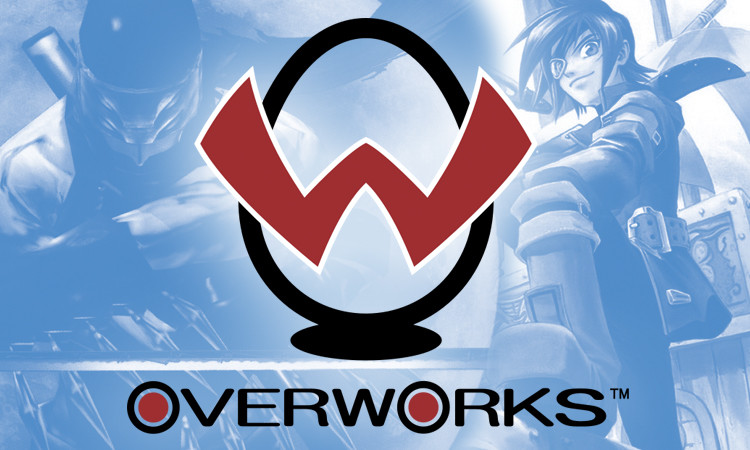
Last week when we kicked off Overworks and WOW Entertainment month, we took a look back at how SEGA organized their many internal development teams over the years. Among those teams were Overworks and WOW Entertainment, two separate teams that released games from 2000 through to 2004 when they were merged and became SEGA WOW. This week, we will be taking a look back at the games released by Overworks. While the Overworks softography is small, especially compared to giants like SEGA AM2, in the span of four years Overworks released some truly classic titles.
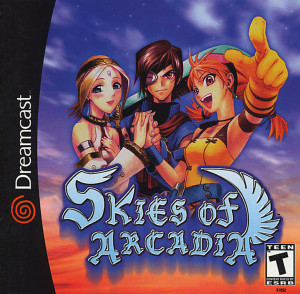 Skies of Arcadia/Eternal Arcadia (エターナル アルカディア) 2000: The first game to be released under the Overworks name, Eternal Arcadia is seen by many to be the best RPG to be released to SEGA’s Dreamcast, and one of SEGA’s greatest RPGs ever. While Eternal Arcadia, retitled Skies of Arcadia in the West, didn’t have much competition on the Dreamcast outside of Grandia II and the Evolution games, it was the game’s unique setting that truly set it apart. Players assumed the role of Vyse, a young pirate who instead of taking to the high seas, took to the skies in a fantasy setting of airborne sailing ships in an attempt to take down the Valuan Empire. While the setting and gameplay style is very similar to Team Andromeda’s Panzer Dragoon Saga, Skies of Arcadia featured a much larger world to explore and much less linear gameplay.
Skies of Arcadia/Eternal Arcadia (エターナル アルカディア) 2000: The first game to be released under the Overworks name, Eternal Arcadia is seen by many to be the best RPG to be released to SEGA’s Dreamcast, and one of SEGA’s greatest RPGs ever. While Eternal Arcadia, retitled Skies of Arcadia in the West, didn’t have much competition on the Dreamcast outside of Grandia II and the Evolution games, it was the game’s unique setting that truly set it apart. Players assumed the role of Vyse, a young pirate who instead of taking to the high seas, took to the skies in a fantasy setting of airborne sailing ships in an attempt to take down the Valuan Empire. While the setting and gameplay style is very similar to Team Andromeda’s Panzer Dragoon Saga, Skies of Arcadia featured a much larger world to explore and much less linear gameplay.
Japan saw two special releases of the game in addition to the regular version. A special edition box of Eternal Arcadia included the game, a pirate bandanna, three keychains, a mobile phone strap, a necklace, and a 64-page art book. The other version, from the @barai line of games, allowed players to access a portion of the game for a small fee, and the ability to unlock the full game for an additional fee.
While Skies of Arcadia never saw a sequel, main characters Vyse and Aika appear in 2008’s Valkyria Chronicles, developed by former Overworks staff, as recruits who can be randomly added to a squad. Vyse also appeared in Sonic & All-Stars Racing Transformed, with Rogue’s Landing appearing as a land and sky-based track.
Gallery:
Screenshots credit: Hardcore Gaming 101
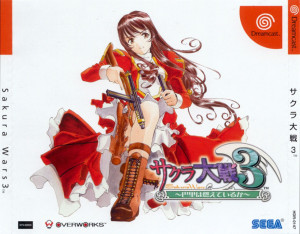 Sakura Taisen 3: Paris wa Moeteiru ka (サクラ大戦3 ~巴里は燃えているか~) 2001: Like past games in the series, Sakura Taisen 3 was jointly developed between Red Entertainment and SEGA, playing as a mix between a strategy RPG and a dating sim. Sakura Taisen 3 is the first Sakura Taisen game to be released after the formation of Overworks. Prior to the third game, Sega Consumer Research and Development Department 2 worked with Red Entertainment on the first two Sakura Taisen titles for the Saturn, as well as working on their own Saturn games, most notably the Resident Evil-like underwater survival horror game Deep Fear. Sega Consumer Research and Development Department 2 was later merged into SEGA AM7, which only existed for a year before becoming Overworks. In that short time, AM7 collaborated with Red Entertainment on bringing the first Sakura Taisen to the Dreamcast, and developing a Dreamcast sequel to the Saturn puzzle game Hanagumi Taisen Columns.
Sakura Taisen 3: Paris wa Moeteiru ka (サクラ大戦3 ~巴里は燃えているか~) 2001: Like past games in the series, Sakura Taisen 3 was jointly developed between Red Entertainment and SEGA, playing as a mix between a strategy RPG and a dating sim. Sakura Taisen 3 is the first Sakura Taisen game to be released after the formation of Overworks. Prior to the third game, Sega Consumer Research and Development Department 2 worked with Red Entertainment on the first two Sakura Taisen titles for the Saturn, as well as working on their own Saturn games, most notably the Resident Evil-like underwater survival horror game Deep Fear. Sega Consumer Research and Development Department 2 was later merged into SEGA AM7, which only existed for a year before becoming Overworks. In that short time, AM7 collaborated with Red Entertainment on bringing the first Sakura Taisen to the Dreamcast, and developing a Dreamcast sequel to the Saturn puzzle game Hanagumi Taisen Columns.
Sakura Taisen 3 is notable to fans of the series as it is the first game in the series to not release to the Saturn, instead bringing the franchise to the Dreamcast. The game also makes a significant change from previous entries, as the main protagonist Ichiro Ogami is sent to France to defend Paris from demons. This leads to an almost entirely new cast of characters being introduced.
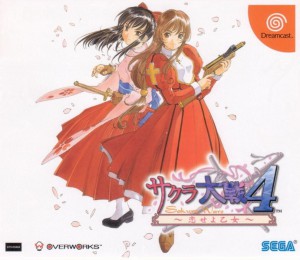 Sakura Taisen 4: Koi Seyo, Otome (サクラ大戦4 ~恋せよ乙女~) 2002: Released only a year after the third game, Sakura Taisen 4 was the second Overworks and Red Entertainment collaboration to release to the Dreamcast and PC. The game was promoted as “The Grand Finale” of the series, despite a fifth title releasing in 2005.
Sakura Taisen 4: Koi Seyo, Otome (サクラ大戦4 ~恋せよ乙女~) 2002: Released only a year after the third game, Sakura Taisen 4 was the second Overworks and Red Entertainment collaboration to release to the Dreamcast and PC. The game was promoted as “The Grand Finale” of the series, despite a fifth title releasing in 2005.
The game’s plot centers around a new enemy which uses a mysterious golden steam that puts machines out of control. On the dating sim end, the game features a conflict between the player and the girls in which the player is researching marriage for a play, but the girls mistake this research for a potential proposal. Once again, the mix of steampunk-inspired combat and dating sim hijinks makes the fourth Sakura Taisen every bit as enjoyable as past games. It’s just a shame that it wasn’t until the fifth game that Westerners were introduced to the series. Still, devoted fans have worked on fan translations and exhaustive walkthroughs. For a more in-depth look at SEGA’s Sakura Taisen series, check out our franchise retrospective written by our resident Sakura Taisen fan Kori-Maru.
Overworks also brought Sakura Taisen 2 and 3 to PC in collaboration with Red Entertainment. The two teams also released an enhanced remake of the original Sakura Taisen for the Playstation 2, dubbed Sakura Taisen: Atsuki Chishio Ni. The remake used the first game’s narrative as a base, but brought in gameplay elements found in Sakura Taisen 3 and Sakura Taisen 4.
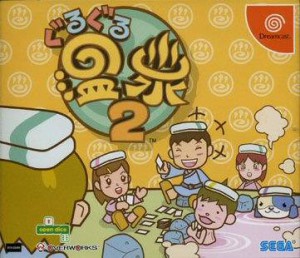 Guru Guru Onsen 2 (ぐるぐる温泉2) 2001 & Guru Guru Onsen 3 (ぐるぐる温泉3) 2002: Sequels to AM7’s Atsumare! Guru Guru Onsen, Guru Guru Onsen 2 and Guru Guru Onsen 3 are a Japan-only series featuring miscellaneous table top games like Mahjong, Uno, Poker and more. While little information is known of the games in the West, they seemed reasonably popular in Japan and notable to SEGA music fans, Hideki Naganuma composed the series theme song!
Guru Guru Onsen 2 (ぐるぐる温泉2) 2001 & Guru Guru Onsen 3 (ぐるぐる温泉3) 2002: Sequels to AM7’s Atsumare! Guru Guru Onsen, Guru Guru Onsen 2 and Guru Guru Onsen 3 are a Japan-only series featuring miscellaneous table top games like Mahjong, Uno, Poker and more. While little information is known of the games in the West, they seemed reasonably popular in Japan and notable to SEGA music fans, Hideki Naganuma composed the series theme song!
In 2002, the series was brought to the PS2 with Online Games: Dai Guru Guru Onsen, allowing PS2 users to play various table top games online. Online functionality was also in the Dreamcast releases, but it is likely by this point the Dreamcast servers were either down or the Guru Guru Onsen community had dwindled.
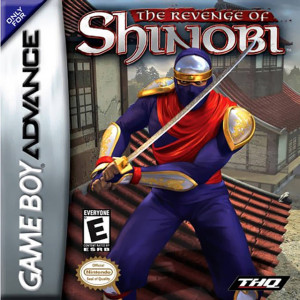 The Revenge of Shinobi 2002: Unrelated to the Mega Drive game of the same name, The Revenge of Shinobi released to the Game Boy Advance in 2002. Developed by 3d6 Games, who also developed of Altered Beast: Guardian of the Realms, the game was released to largely negative reviews. Despite Overworks also being credited as a co-developer, it is likely they were largely in an advisory role due to members of Overworks also working on past Shinobi titles.
The Revenge of Shinobi 2002: Unrelated to the Mega Drive game of the same name, The Revenge of Shinobi released to the Game Boy Advance in 2002. Developed by 3d6 Games, who also developed of Altered Beast: Guardian of the Realms, the game was released to largely negative reviews. Despite Overworks also being credited as a co-developer, it is likely they were largely in an advisory role due to members of Overworks also working on past Shinobi titles.
While the game plays like a 2D Shinobi game of old, almost every element is bland and forgettable. Rather than building on the series, gameplay is incredibly simplistic, with enemies bringing very little threat to the player and being very easy to dispatch. Graphics are a mixed bag, with colorful and detailed settings, but weak character animations. Overall, the Game Boy Advance’s The Revenge of Shinobi is the dark mark on Overwork’s otherwise spotless library. Thanks a lot, 3d6 Games!
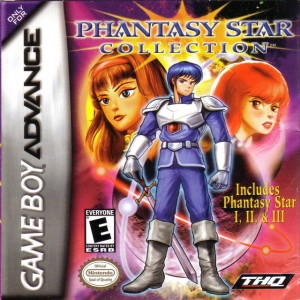 Phantasy Star Collection 2002: Overworks served as advisors to Digital Eclipse in the development of Phantasy Star Collection, a Game Boy Advance compilation cartridge of the first three Phantasy Star games. The compilation is notable for featuring original Phantasy Star staff in supervisor roles, including Yoshiaki Endo (Phantasy Star IV battle programmer), Toru Yoshida (series designer), and SEGA legend and series designer Rieko Kodama.
Phantasy Star Collection 2002: Overworks served as advisors to Digital Eclipse in the development of Phantasy Star Collection, a Game Boy Advance compilation cartridge of the first three Phantasy Star games. The compilation is notable for featuring original Phantasy Star staff in supervisor roles, including Yoshiaki Endo (Phantasy Star IV battle programmer), Toru Yoshida (series designer), and SEGA legend and series designer Rieko Kodama.
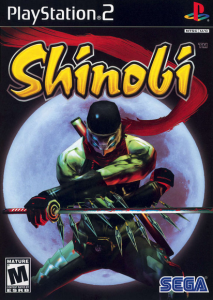 Shinobi 2002: One of the last major Overworks titles, Shinobi for the Playstation 2 was both incredibly stylized and incredibly difficult. Players assumed the role of a ninja named Hotsuma in a 3D action adventure take on the original Shinobi formula. Wielding Akujiki, a sword that feeds on enemy souls, Hotsuma also uses series staples like ninja magic and shurikens to defeat the sorcerer Hiruko.
Shinobi 2002: One of the last major Overworks titles, Shinobi for the Playstation 2 was both incredibly stylized and incredibly difficult. Players assumed the role of a ninja named Hotsuma in a 3D action adventure take on the original Shinobi formula. Wielding Akujiki, a sword that feeds on enemy souls, Hotsuma also uses series staples like ninja magic and shurikens to defeat the sorcerer Hiruko.
Despite being generally well received by critics, the game is notoriously difficult. While the first few stages are quite easy, eventually players encounter stages that run longer than ten minutes in length with zero checkpoints in place and instant deaths over bottomless pits requiring expert platforming. In addition to this, Hotsuma’s soul consuming blade also drains him of his energy, meaning players must constantly be killing foes to survive. The one saving grace to this brutal gameplay is that the game at least offers unlimited lives. The game is notable for having a multimedia campaign in the West, featuring a companion comic book, a soundtrack album, and a sequel entitled Nightshade released by SEGA WOW.
Gallery:
Screenshots credit: Hardcore Gaming 101
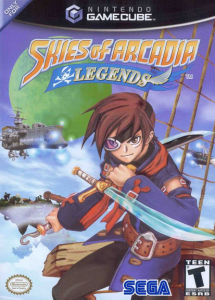 Skies of Arcadia Legends (Eternal Arcadia Legend (エターナルアルカディア レジェンド )) 2002: Was an enhanced release of the Dreamcast original for Nintendo’s GameCube and was one of Overworks final releases to consoles, fittingly bookending their time as a development team with Skies of Arcadia titles.
Skies of Arcadia Legends (Eternal Arcadia Legend (エターナルアルカディア レジェンド )) 2002: Was an enhanced release of the Dreamcast original for Nintendo’s GameCube and was one of Overworks final releases to consoles, fittingly bookending their time as a development team with Skies of Arcadia titles.
Playstation 2 and Windows PC were also slated to receive the game, but development of these ports were cancelled before the GameCube release. The rerelease boasted new content in the form of “Wanted” battles, new characters, weapons, and a “Director’s Cut” version of the original game.
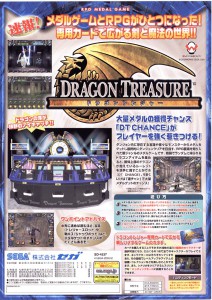 Dragon Treasure 2003: While Overworks primarily worked on home console titles, they do have one arcade game to their name called Dragon Treasure. Released to arcades in 2003, the game is a multiplayer RPG fantasy adventure shooting game in which players enter a dungeon and battle a variety of monsters in a quest to find lost treasure. The game was only released in Japan, and very little information exists online. If you know of character and story details, or have video of the game in action, let us know in the comments below!
Dragon Treasure 2003: While Overworks primarily worked on home console titles, they do have one arcade game to their name called Dragon Treasure. Released to arcades in 2003, the game is a multiplayer RPG fantasy adventure shooting game in which players enter a dungeon and battle a variety of monsters in a quest to find lost treasure. The game was only released in Japan, and very little information exists online. If you know of character and story details, or have video of the game in action, let us know in the comments below!
Knight’n Knight 2003: We end our look back on the Overworks softography with the unreleased Knight’n Knight. Revealed in early 2003 with claims that Overworks was developing it, Knight ‘n Knight was intended for release on the GameCube and was said to be a new entry in SEGA’s classic Clockwork Knight series. Unfortunately, the game was cancelled, presumably due to SEGA’s restructuring of development teams and the merger of Overworks and WOW Entertainment to create SEGA WOW.
Stay tuned for more Overworks articles as the week rolls on, including a nostalgic look back at Skies of Arcadia!
In the comments below, share your favorite Overworks titles. Were you one of the few to 100% Shinobi? (Don’t lie, we know nobody has every completed that game.)
Ad:
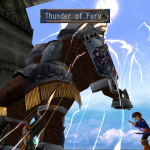
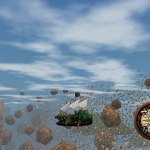
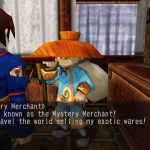
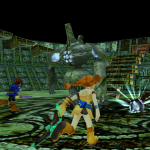
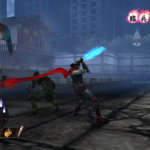
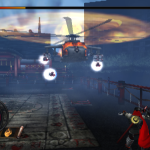
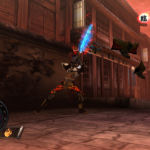
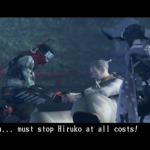


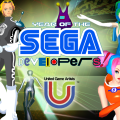
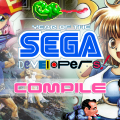
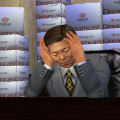
These kinds of articles are y I love sega bits thx for the great read !
Looks like you’ve done some serious research on to this, I always thought Consumer Development Division were expanded into AM Teams with the inception of Sonic Team.
http://en.wikipedia.org/wiki/Sega_development_studios#Consumer_development_division
Oh and I absolutely love Shinobi on the PS2. If you master the gameplay you can breeze through the levels. The only problem and frustration I remember is from Level 7, the Nakatomi Factory/Lab one. It had Shinobi going through a lot of cramped corridors, where platforming was especially hard due to the camera angles.
I think the new Shinobi games were inspired by the 3D Sonic style of gameplay.
Actually it was always “Consumer R&D” since it wasn’t for arcade.
But AM goes too, because Sega were developing for a “amusement machine” (what AM stands for), which was their own console.